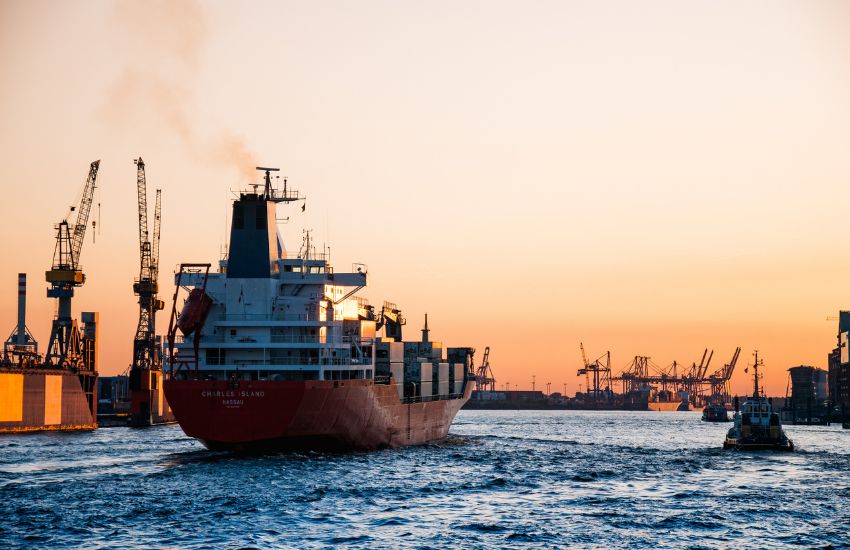Parcel Tanker & Container Freight Markets: The Key Dynamics
In the previous edition of TNI, I wrote about transport and hub selection for liquid bulk cargoes. Since I compared parcel tankers and tank containers, I would now like to elaborate on the market dynamics that shape chemical parcel tanker and container freight markets. Understanding the underlying dynamics making freight markets is crucial for shippers, ship owners, and investors and key to developing a successful supply chain.
This article is written by Rudi Stalmans and featured in the 2020 winter edition of Tank News International.
Demand for seaborne trade
Supply and demand imbalances in commodity markets drive the demand for seaborne trade. To understand demand, you can monitor economic indicators, such as GDP, which shows if an economy is slowing down or growing. Shifts in production and consumption, black swan events, and trade wars can impact markets. Seaborne transportation of chemicals is taking place in all parts of the world between major chemical supply areas and chemical importing regions. Imbalances in the market will result in liquid bulk and chemical cargo shipments on different global and regional trade lanes, either in parcel tankers or container ships. For larger volumes, the deep-sea parcel tanker trade is on long haul trade lanes between continents, while the short-sea or short-haul trade is a regional trade. There can always be a shift in trade lanes because of regional growth in chemical plants and refinery capacity. Smaller volumes, on the other hand, can be shipped in containers, including tank containers. Demand for container shipping can come from regions with an increased demand for containerized goods but also from industries that are adapting to containerization.
The state of the parcel tanker and container vessel fleet
The first important supply indicator is the state of the chemical parcel tanker and container vessel fleet. To know the fleet state, we need to evaluate the current fleet size, add the order book of new vessels, and deduct the tonnage which will be scrapped.
The current fleet is the total number of ships currently available in the market. Vessels in this fleet also include inactive, laid-up, and idle ships.
A vessel on order is a vessel for which a contract has been confirmed and reported. Vessels remain on the order book until delivered to the owner. When markets are favorable, new investors easily enter the shipping space to get a share of the booming shipping market opportunity. It is also paramount to see if delivered vessels are replacements for older and underperforming vessels or pure additions to the existing fleet.
Finally, we need to look at tonnage for scrapping, which is the disposal and breaking up of ships. Often ships are scrapped when scrap prices are attractive. Scrapping sometimes happens to deal with the high cost of meeting regulatory requirements. But vessel age restrictions, which are often imposed by the vetting departments of oil and chemical majors on parcel tankers, also impact demolition decisions.
Monitoring fleet growth is valuable as oversupply will put pressure on freight rates, and a contracting fleet will provide support for higher freight rates.
The market structure of container shipping
Its lanes of operation, geographical reach, reliability, industry coverage, and digital advantages determine a shipping line’s capabilities. There are large global players with multi-trade lane offerings and various smaller operators who navigate either regional shuttles or feeder vessels catering to a particular region. The container freight market is often also affected by mergers and alliances. There are two main freight service models. On the one hand, there is the direct port calls model, and on the other hand, the hub and spoke model. The direct port calls model is more global. The hub and spoke model considers that it is cheaper to shuttle between hubs with bigger ships and then distribute with smaller feeders. In this model, the smaller vessels are sailing on shorter routes. The industry pricing components include the freight cost, terminal handling charges, customs clearance, and other additional costs. Minimum quantity commitments and the major lanes and routes of operation have an impact on freight negotiations. The container market also has seasonal trends during which the balance between supply and demand swings towards carriers or cargo owners. Freight procurement is either centralized or regional while contracting is via direct sales or freight forwarders. One last important consideration is the availability of equipment, including empty containers and tank containers.
Parcel tanker boom and bust cycles
The chemical parcel tanker freight markets move with short-term seasonal cycles and long-term economic boom and bust cycles. For the short-term freight cycles, for example, I can predict that market sentiment tends to be firmer during wintertime when chemical parcel tankers also carry more clean petroleum products reducing space availability for chemicals. In the long-term freight cycle, boom times go hand in hand with higher demand for vessels and an increase in the order book, ultimately resulting in oversupply. For parcel tankers, evaluating the level of sophistication of ships, such as the type of tank coatings and the number of segregations, is also essential. Shipbrokers often help to negotiate shipping contracts due to the nature of the tanker trade, which involves parceling.
Conclusion
To forecast freight, you need to analyze the supply and demand imbalances in the market. But note that parcel tanker and container shipping are very different industries that play by their own rules and dynamics. While vessel cost and bunkers are major cost components, regulatory changes, innovation, digitalization, green shipping, alternative fuels, and new trends continue to impact freight markets.
Interested in the liquid bulk supply chain? Download our free Whitepaper.
Photo Credit: Canva

